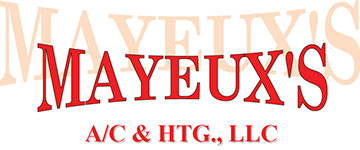
You shouldn’t have to compromise on comfort or drain your wallet to keep your residence at the right temp during hot days.
But what is the right setting, exactly? We go over recommendations from energy experts so you can choose the best temperature for your house.
Here’s what we advise for the most energy-efficient setting for air conditioning in Norco and St. Charles Parish.
Recommended Thermostat Settings for Summer
Most people find setting the thermostat at 72-73 degrees provides ideal comfort. However, if there’s a huge difference between your interior and outside temps, your AC bills will be greater.
This is our advice based on the U.S. Department of Energy (DOE) and ENERGY STAR®.
While at home: 78 degrees. While that seems too high, there are approaches you can keep your residence cool without having the air conditioner going constantly.
Keeping windows and blinds closed during the day keeps cool air where it needs to be—inside. Some window solutions, like honeycomb shades or plantation shutters, are made to provide added insulation and better energy savings.
If you have ceiling fans in your house, the DOE says you can raise thermostat temperatures about 4 degrees higher without compromising comfort. That’s due to the fact they cool by a windchill effect. Because they cool people, not spaces, shut them off when you move from a room.
If 78 degrees still appears too hot initially, try running a test for a week or so. Start by upping your thermostat to 78 degrees while you’re home. Then, steadily decrease it while following the suggestions above. You may be astonished at how comfortable you feel at a warmer temperature setting.
While away: 88 degrees. There’s no rationale for keeping the AC running all day while your home is vacant. Moving the temperature 7–10 degrees warmer can save you as much as 5–15% on your cooling expenses, according to the DOE.
When you arrive home, don’t be tempted to put your thermostat under 78 to cool your residence more rapidly. This isn’t productive and often results in a higher electricity expense.
A programmable thermostat is a helpful method to keep your temp under control, but it requires setting programs. If you don’t use programs, you risk forgetting to increase the set temperature when you go.
If you need a handy resolution, consider installing a smart thermostat. This thermostat links with your phone, so it is aware when you’re at your residence and when you’re out. Then it instinctively modifies temperature settings for maximum savings. How much exactly? Usually $180 annually on heating and cooling, according to ENERGY STAR.
Another benefit of using a smart thermostat? You can use your phone to watch and regulate temperature settings from almost anywhere.
While sleeping: Around 70 degrees. While ENERGY STAR recommends 82 degrees, that may be unbearable for most families. Most people sleep better when their sleeping space is chilly, so that’s why the National Sleep Foundation advises 60–67 degrees. But that may be too cool, based on your pajama and blanket preference.
We suggest following a similar test over a week, setting your temperature higher and steadily turning it down to choose the best temp for your house. On pleasant nights, you could find keeping windows open at night and using a ceiling fan is a preferable option than using the air conditioning.
More Approaches to Use Less Energy During Warm Weather
There are added methods you can spend less money on cooling bills throughout the summer.
- Buy an energy-efficient AC system. Central air conditioners only last about 12–15 years and become less efficient as they become older. An upgraded air conditioner can keep your house comfier while keeping electricity bills low.
- Schedule annual air conditioner maintenance. Annual air conditioner maintenance keeps your equipment running smoothly and might help it run more efficiently. It can also help prolong its life expectancy, since it allows technicians to pinpoint small problems before they create a major meltdown.
- Switch air filters often. Read manufacturer instructions for switching your air filter. A dusty filter can cause your system to short cycle, or turn on and off too much, and raise your electrical.
- Measure attic insulation levels. Almost 90% of houses in the USA don’t have proper insulation, according to the Insulation Institute. Many southern climates require 13–14” of attic insulation, while northern climates need 16–18”.
- Have your ductwork examined. Ductwork that has come apart over time can seep cold air into your attic, walls or crawl space. This can result in major comfort troubles in your home, like hot and cold spots.
- Seal openings, doors and windows. Keep humid air where it belongs by sealing openings. You can also caulk or weather strip doors to keep more conditioned air within your home.
Conserve More Energy During Hot Weather with Mayeuxs AC & Heating
If you need to use less energy during warm weather, our Mayeuxs AC & Heating specialists can assist you. Reach us at (985) 764-2426 or contact us online for additional info about our energy-saving cooling solutions.



